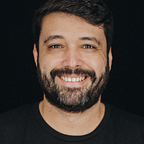CanUX 2016: The largest annual UX event in Canada
Every year I try to attend to at least one big UX event, preferably in another country. I do it because there are some good speakers that usually just speak for the local community, and also to talk with the local designers about the process and methods they apply at work. Last year I choose the hot countryside of Argentina, but this year I decided that would be good to face some colder place, so I choose the largest annual UX event in Canada, CanUX2016 in Ottawa. A cozy and quiet city with great options of hotels, bars, and restaurants.
The event had the participation of well know speakers like Stephen Anderson e Alan Cooper. And also, some cool surprises like Lynsey Thornton from Shopify, talking about the challenges of scale a UX team, and Simone Rebaudengo from Automato, showing his experiences with emotional objects. The UX community of the region seems to be united and receptive, Survey Monkey and Shopify have offices in the city. I also noticed a small but really interested group of developers, entrepreneurs, and product managers attending the conference.
I learned a lot of things on these two days, and these are the ones I consider more relevant to share:
Users don’t care about sprints: Don’t matter how many sprints took to develop a solution, as long as it was shipped with quality. The famous “This is too much for one sprint” is a problem for the company not for the user, so don’t ship until something it’s done.
The physical world: Don’t focus only on the interface, your solution need a device to work. There is nothing on this device that you can use to create a richer experience, like a sensor or light feedback?
Research: This one is simple, let the research for the researchers. Include some more questions on a discussion guide is like someone asking you to move some the logo five pixels left. Explain what are your hypothesis and let the researcher decide the best way to run the user testing.
The good friction: We always try to remove all friction in the experiences we design, but a small amount of it could be good for the user learn in a progressive way.
Common journeys: A journey could not be considered a routine, users have different ways to solve a problem.
Sound: How many times you used sound as a way to provide feedback to your users?
Fails: Are part of the process, but don’t be careless, a big failure could cost the future of the company.
Community: Design it’s not a top-secret formula, share your fails and learnings, help and inspire others to create better solutions.
Pros
The event was hosted at the Canadian Museum of History, that have the perfect structure to receive an event of this size. The organization and quality of speakers were great, and there were also a job fair and partnerships with hotels and restaurants. After the event, they sent a survey for the participants and shared the results in a nice and structured way.
Cons
I just don’t consider it perfect because it hasn’t that memorable moment. It was a series of good experiences and knowledge share with cool speakers, but nothing really surprised me.
Bonus
The welcome kit come with some cool stuff, a kind of survival kit for Canada, but I’m just thinking that some of the items will not be useful in the hot Brazilian climate.
